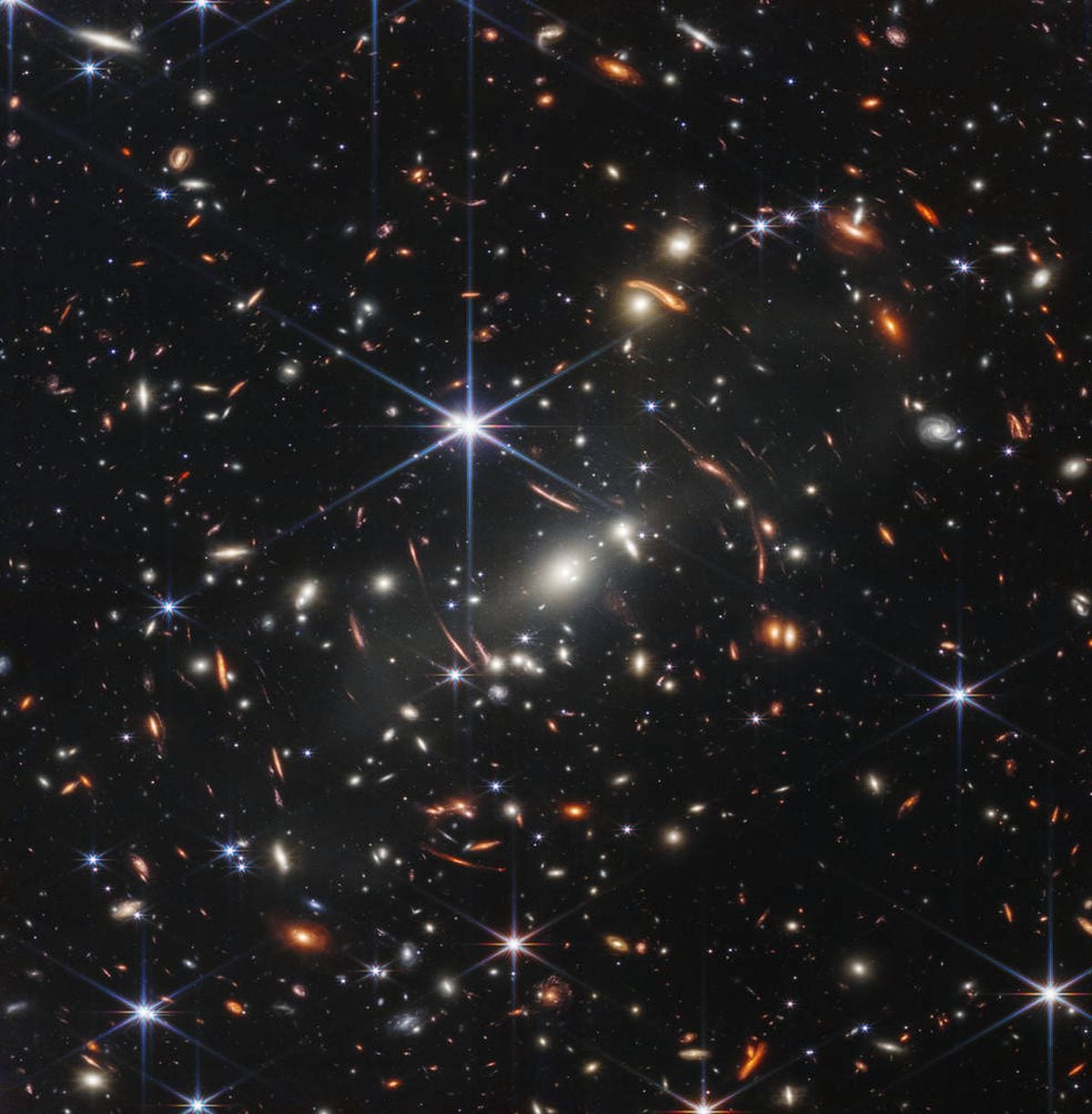US President Joe Biden today unveiled the first full color image taken by the
James Webb
Space Telescope , the largest astronomical observatory ever launched into space.
It has done so more than an hour late on schedule, and ahead of the official presentation of all the images with the rest of the space agencies, which will take place tomorrow, Tuesday, the 12th. "Today is a historic day" , said Biden, accompanied by Vice President Kamala Harris, and members of his Government.
More information
SPECIAL |
The telescope that will see how light was born in the universe
The
Webb
is one of the largest scientific projects in history, both because of its size and its cost —9,000 million euros— and because of the three decades that it took to design, build and launch.
The space agencies of the USA, Europe and Canada have collaborated in its development.
At the moment, the observatory is anchored in an orbit around the Sun at the second Lagrange point, 1.5 million kilometers from our planet.
Its six and a half meter diameter gold-plated mirror is the largest ever deployed in space and will be able to observe the most distant and oldest objects in the universe, including the first galaxies and the first stars born just 100 million years ago. years after the Big Bang.
The observatory is specialized in capturing infrared light —invisible to human eyes— emitted by this type of object.
In addition, it is the first to be able to see through dust clouds and reveal the appearance of the stars behind them.
Thanks to the
Webb
and other existing telescopes, such as the
Hubble
and
Chandra
, humanity will be able to observe the cosmos in unprecedented light range and detail.
The publication of this first image is the prologue to what will arrive tomorrow at 4:30 p.m., Spanish peninsular time, when the rest of the first snapshots taken by the telescope come to light and mark the moment when it begins to work at full capacity.
These are the five objects that the
Webb
will portray:
The Carina Nebula.
Located 7,600 light-years from Earth, it is the brightest known nebula and stars are being born and dying inside it.
WASP-96b
.
A giant planet somewhat larger than Jupiter that is 1,150 light years away.
If on Earth a year lasts 365 days, the time it takes for our planet to complete an orbit around the Sun, this world is so close to its star that each year lasts just three and a half days.
The main characteristic of this huge gaseous world is that, unlike Jupiter or Saturn, it does not appear to have clouds.
Spectroscopy data from Webb is expected to indicate what elements are in its atmosphere to confirm previous observations made with other telescopes.
NGC 3132.
This huge, expanding cloud of gas surrounds a dying star 2,000 light-years from Earth.
It is also known as the Southern Ring Nebula, and is only visible from the southern hemisphere.
Stephan's Quintet.
The first compact group of galaxies, discovered in 1877 by the French astronomer Édouard Jean-Marie Stephan.
It is about 300 million light years away.
Four of its galaxies are united by their forces of gravity in a violent choreography that sometimes makes them collide, which revives the birth of new stars.
SMACS 0723.
The force of gravity exerted around a nearby galaxy can work like a magnifying glass, amplifying the light of much more distant galaxies behind it.
Webb
will
capture this phenomenon to show that he can use these astronomical lenses to study very distant objects.
The selection of these five objectives has taken more than five years of study between the three space agencies responsible for the project.
This set of images "is intended to highlight the enormous capabilities of
Webb
's instruments and give an idea of what is to come," said Klaus Pontoppidan, one of the scientific leaders of the mission.
“Surely these images start a wow!, to astronomers and the general public”, he added in a press release.
You can follow
MATERIA
on
,
and
, or sign up here to receive
our weekly newsletter
.






